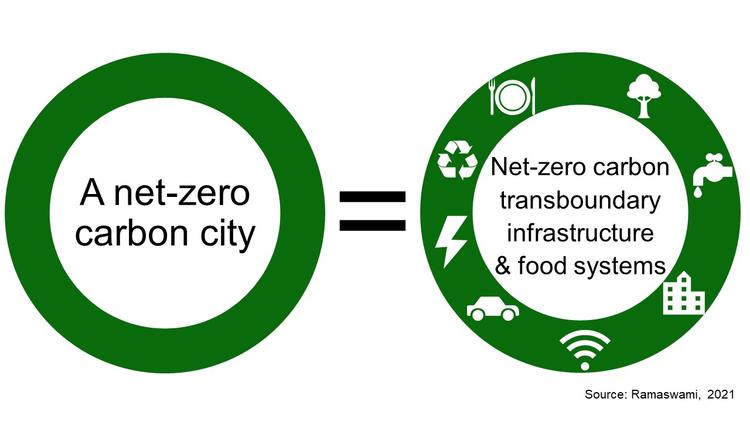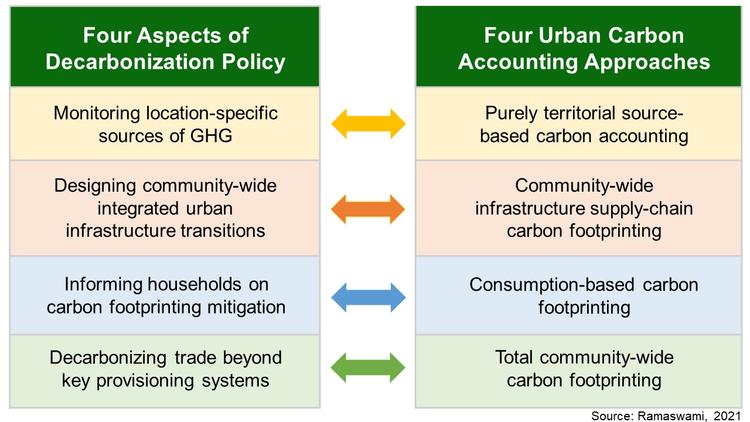
Figure A: A net-zero carbon city = net-zero carbon transboundary infrastructure and food systems across seven sectors
A major challenge for city-level decarbonization plans is the lack of consensus on how to measure urban carbon emissions in the first place. In a new comment for Nature Sustainability, a group of scientists and urban-policy specialists attempt to cut through the confusion about urban carbon accounting approaches by laying out seven key service sectors that city leaders can evaluate to gauge — and reduce — their carbon emissions.
The authors report that transitioning these sectors to net-zero carbon can be coupled with improvements that would enhance equal access to food, sanitation, clean air and water, transportation and essential city services. The authors emphasize focusing on the seven sectors of energy, transportation-communications, food, construction materials, water, green infrastructure, and waste-management systems as part of a “transboundary” approach. The transboundary approach involves tracking carbon emissions along the supply chains that connect community-wide demand for these services to the power plants, factories and farms that produce electricity, fuels, construction materials, water, and food essential for cities to function.
Read the full piece in Nature Sustainability here.
Read the full news article here.
Additional content: Read Prof. Ramaswami's blog post about how the process of writing this paper.

Figure B: Four aspects of decarbonization policy map to four urban carbon accounting approaches. 1) Monitoring location-specific sources of GHG = Purely territorial source-based carbon accounting. 2) Designing community-wide integrated urban infrastructure transitions = Community-wide infrastructure supply-chain carbon footprinting. 3) Informing households on carbon footprinting mitigation = Consumption-based carbon footprinting. 4) Decarbonizing trade beyond key provisioning systems = Total community-wide carbon footprinting.

